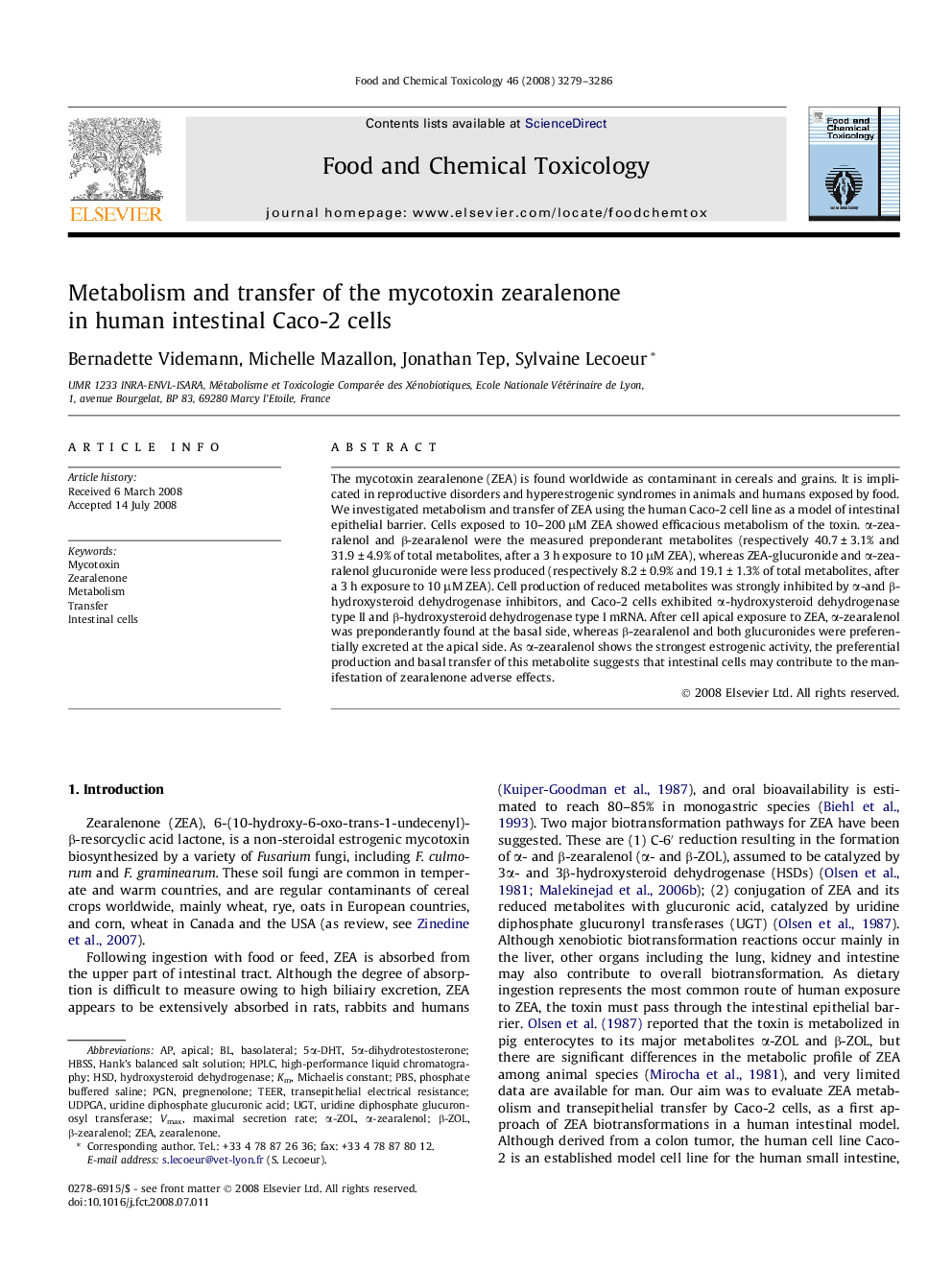| کد مقاله | کد نشریه | سال انتشار | مقاله انگلیسی | نسخه تمام متن |
|---|---|---|---|---|
| 2587241 | 1130920 | 2008 | 8 صفحه PDF | دانلود رایگان |

The mycotoxin zearalenone (ZEA) is found worldwide as contaminant in cereals and grains. It is implicated in reproductive disorders and hyperestrogenic syndromes in animals and humans exposed by food. We investigated metabolism and transfer of ZEA using the human Caco-2 cell line as a model of intestinal epithelial barrier. Cells exposed to 10–200 μM ZEA showed efficacious metabolism of the toxin. α-zearalenol and β-zearalenol were the measured preponderant metabolites (respectively 40.7 ± 3.1% and 31.9 ± 4.9% of total metabolites, after a 3 h exposure to 10 μM ZEA), whereas ZEA-glucuronide and α-zearalenol glucuronide were less produced (respectively 8.2 ± 0.9% and 19.1 ± 1.3% of total metabolites, after a 3 h exposure to 10 μM ZEA). Cell production of reduced metabolites was strongly inhibited by α-and β-hydroxysteroid dehydrogenase inhibitors, and Caco-2 cells exhibited α-hydroxysteroid dehydrogenase type II and β-hydroxysteroid dehydrogenase type I mRNA. After cell apical exposure to ZEA, α-zearalenol was preponderantly found at the basal side, whereas β-zearalenol and both glucuronides were preferentially excreted at the apical side. As α-zearalenol shows the strongest estrogenic activity, the preferential production and basal transfer of this metabolite suggests that intestinal cells may contribute to the manifestation of zearalenone adverse effects.
Journal: Food and Chemical Toxicology - Volume 46, Issue 10, October 2008, Pages 3279–3286